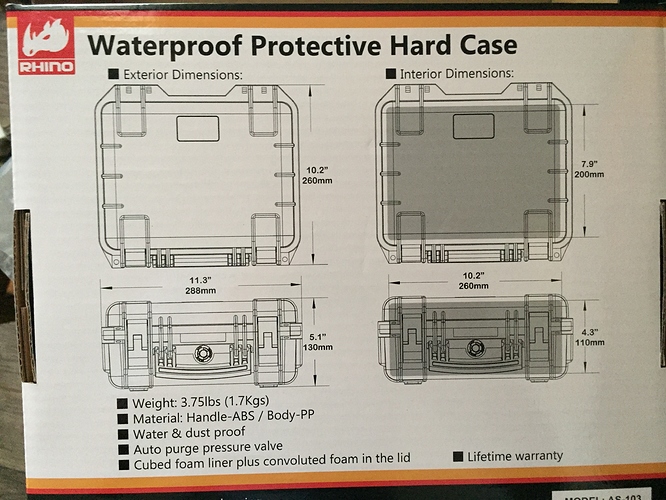Finally yesterday was first test in water…
It’s still in a testing phase…
so i’m using a board i made for surf foil, the electronic is in a case, and the wires are running outside the mast… and duct-taped to the board.
the idea was to see if i could get away without water-cooling of the ESC… the ESC held up well, but got to 70+ degree celsius… so ill add the water-cooling in next version.
i still need to perfect the balance of the whole thing… flight is very unstable and the nose is pointing way too high, may be because of my custom huge wing 3d printed already posted somewhere on this forum … next test will be with the original foil fish front wing.
motor is 80-100 80 kv with the following modifications:
- completely open stainless bearing, soaked in CorrosionX
- titanium shaft shorter than original, much shorter.
- space between magnets epoxied to get the inside of the rotor smooth
- stator with a few layer of epoxy on the windings (no vacuum)
- shorter leads with liquid tape on them and layers of adhesive shrink tubing
- plate added on the spoke side of rotor to fill the gaps (it reduces a lot the hydro-something losses)
ESC is a 400A Boat ESC 16S … that’s why i was hoping no cooling would be ok. passive cooling with an aluminum plate might be enough, but adding a small pump will be safer… and it’s a boat ESC so it will be easy to connect to the cooling.
The propeller is a Solas 0001-073-06P, modified with a dremel to attache it with 2 screws
batteries are 2x Turnigy MultiStar 6S 16000mAh 10C .
i played for an hour, but not continuous use… and plenty energy left… next test i hope to learn more about autonomy
the case also contains:
- 200A Amp Manual Reset Inline Circuit Breaker (it tripped mid way to the test, may be because of heat… i don’t think i reached 200A.
- HTRC 200A High Precision Battery Checker Watt Meter And Power Analyzer HT-0011. Bad choice… it doesn’t keep memory once powered off and is unreadable when riding …
- antispark is done with anti spark XT90 connectors.
- W1209 12V -50-110°C Digital Thermostat. for now, it just monitors temperature, but i might use the switch function as a safety in the future.
I still need to open the case to turn the system on/off.
The remote is custom made arduino based with 315mhz modules.
acceleration is kind of smooth, the program on the receiver is limiting the ramp up. The ramp down is straight from the trigger position, but that’s not ideal… When things starts to go wrong, and i release the trigger, the motor just stops and the wipeout is assured.
the good point is that it doesn’t loose connection when you go quickly under water (i have a led on the receiver showing that connection is established) and it stayed dry inside!
first picture is the battery in the first position i tried:
i though, same as my center of gravity when i ride the foil without motor… big mistake, the motor changes everything …
this is the second position, muuuuuch better. but not far enough to the front i think…
the pads are where i have my feet when surf foiling, not adapted at all when using the motor…
and yes, the wires are not completely covered by the “wire covers” … i wanted to test and couldn’t wait for more to be printed 
The next steps will be to:
- add a cooling pump,
- route the wires inside the mast and add cooling line,
- play with the angle of the back wing to try to level the board in flight
- play with the box position to find the right balance
- improve the remote programing. May be have a dead man switch on one side, and use the trigger to bring the power up or down slowly… still some thinking to do there…
- build a new board to get rid of the box once balance is right. It will be shorter (i’ll aim around 6ft) and wider to be more stable when standing up. the thickness will come from the volume needed (i’ll aim around 80 liter)

